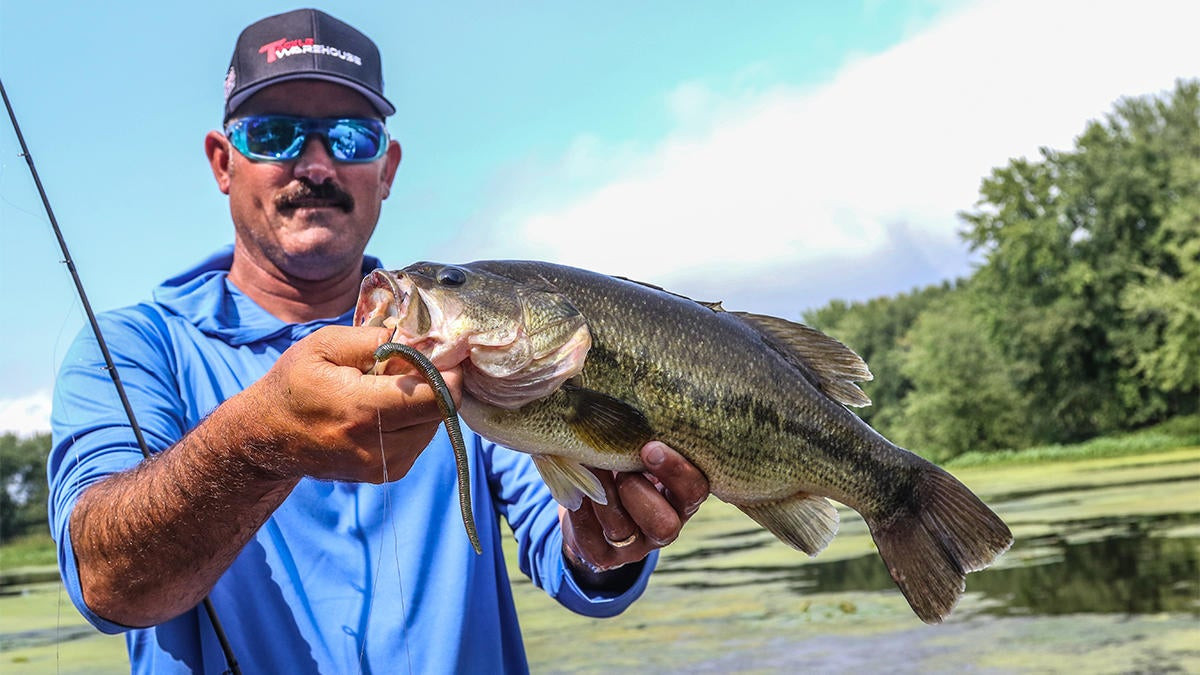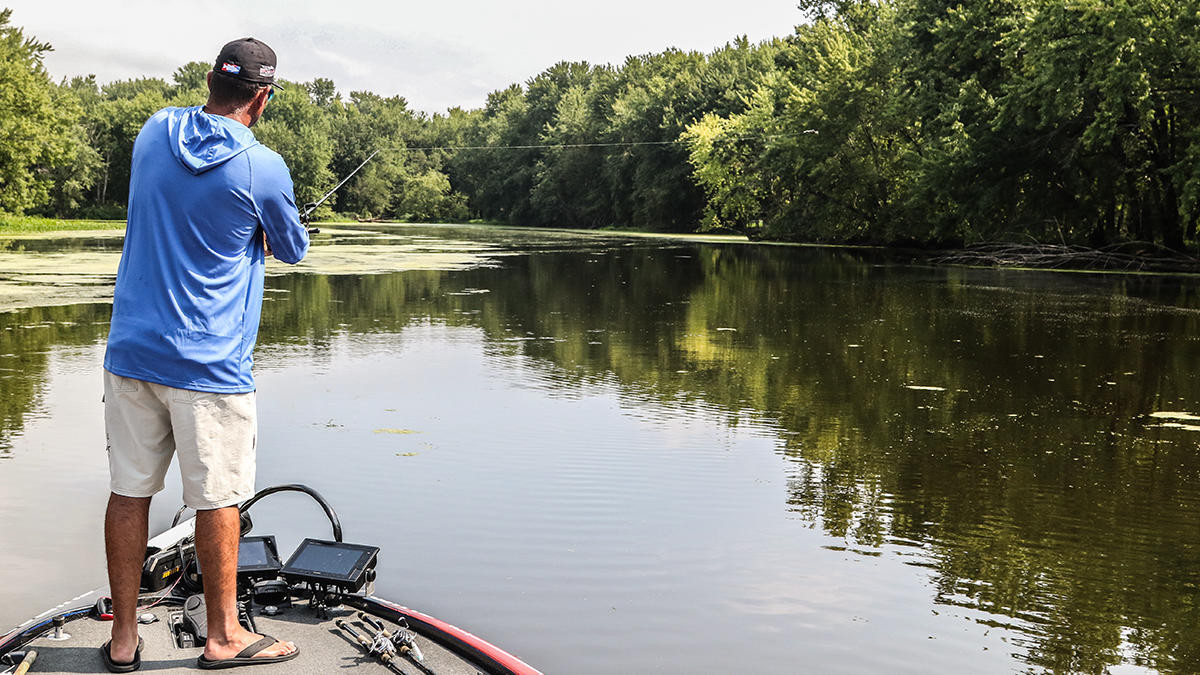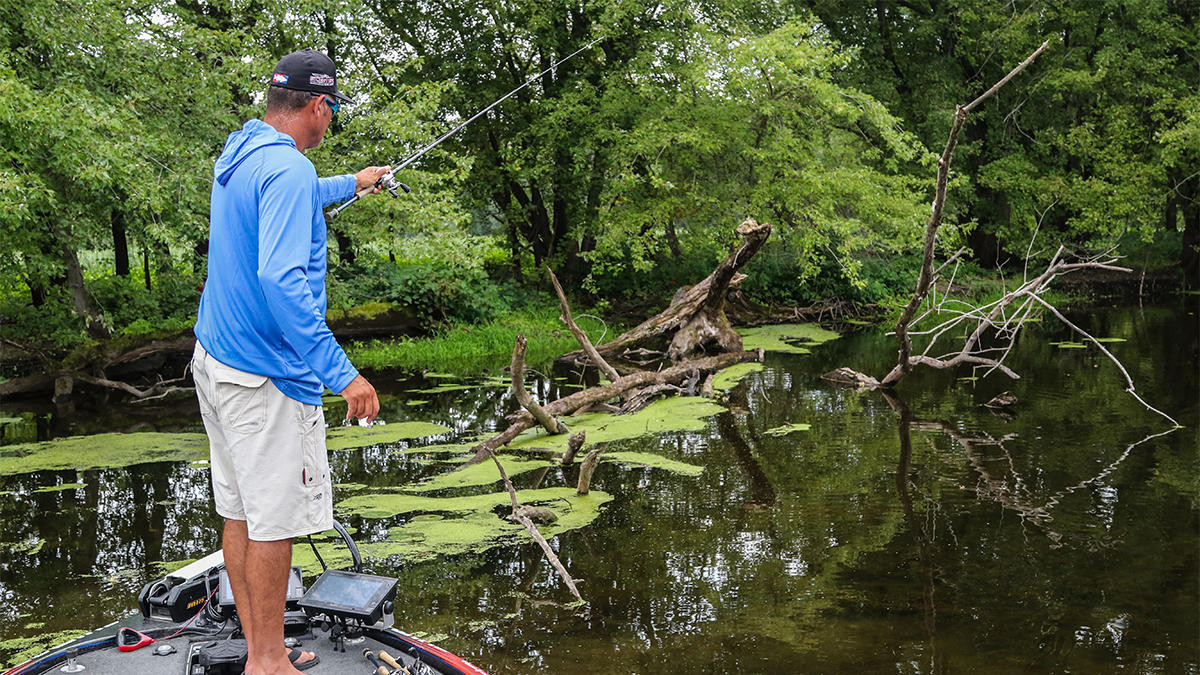We use words like “stagnant” and “dead end,” but backwater sloughs can be the overlooked gems of bass fishing. Often, you’ll find several alluring habitat features within a concentrated area, and while it’s not necessarily an end-to-end opportunity, Western pro Jared Lintner knows the bounty can be worth the search.
Given their strategic role during spring spawns and the fall feeding fest, when new groups of fish are constantly reloading, it’s easy to mistakenly relegate sloughs to seasonal particulars. However, Lintner sees a broader picture.
“In postspawn, a lot of people think you have to get way offshore and that’s where all the fish go; but there’s a really big population of fish that live shallow year-round,” the California pro said. “I’ve caught them in the dead of winter in the coldest temperatures to the hottest temperatures of summer in 2 feet or less.”
Flow for the go
The key, Lintner said, is water movement. From the California Delta’s tidal sloughs, to riverine backwaters off the Upper Mississippi, regular flow not only enlivens the scene with oxygenated water and baitfish, it also creates key areas that can make your search more time-efficient. Day to day, the bends are where he expects to find fish concentrated and any laydowns or logs in these key areas are golden.
“The way the water flows in these places, it’s going to be deeper in some sections than others,” Lintner said. “High water periods or a big amount of rain will flush out certain sections and create a harder bottom or expose some rock and those fish will pile onto those spots.
“With the water flowing over these spots and the grass that will grow around those hard areas, it’s the perfect storm for some really exciting action.”
These deeper spots are almost always a good starting point, but during the spawning season, Lintner knows the resident fish, as well as transients, will simply make a short jog to the adjacent flats, do their deal and drop back into their comfort zone.
Productive presentations
Knowing that slough fish mostly feed on crawfish and bream, Lintner will always have a flipping stick and a Texas-rigged Jackall Chunk Craw on his deck. He’ll alternate this with a beefy powershot rig carrying a Fat Robo Worm or a Jackall Neko Flick.
“In that type of environment, I’ve never felt the need to throw a 4-inch worm,” Lintner said. “I feel that the same fish will bite a 4-inch worm will bite 6-inch worm and I have a better chance of catching a quality fish on a bigger worm.”
A topwater bait, be it a walking model or a buzzbait, is Lintner’s key tool for covering water to A) find active fish and B) evaluate their aggression level. Are they swirling and nipping or knocking the paint off bait?
He’ll also throw a swim jig with a trailer appropriate for the fish’s mood, along with a wacky-rigged Senko. The latter is mostly a cleanup bait, or a problem-solver when fish are playing hard-to-get. And while that finesse rig could earn you a bite most anywhere i the slough, Lintner’s still going to lean on the topwaters for fish-finding duty.
“You can go into a slough and throw a Senko all day, but it’s going to take you all day to find what I can find in an hour (with a topwater),” he said.
Challenges
As Lintner points out, the mapping for backwater sloughs typically pales in comparison to the main lake, so the challenge is “can you run it?”
“There are some sloughs on the California Delta where I’ve idled for an hour to get to the back of it,” he said. “If I didn’t hit anything, I’d run in and out, but without the mapping, it takes you back to the days before (modern electronics) where you’re getting in there and trying to figure out where the deeper sections were, if there’s rock in certain bends. It’s not as easy to figure out what you’re dealing with.
“The other challenging part is that not everywhere in the slough is going to have an abundance of fish. You might go into a slough and say ‘I’m just not getting bit,’ and turn around, where if you had gone another 1/8 mile, you would have found the glory hole, because of the current or habitat that was there.”
Realistically, sloughs are not always the slam dunk. Google Earth will offer clues on the important topographical features, but on-site recon is your best learning tool. Snoop around, note the sweet spots and check them during various conditions – time of day, weather, high and low tide (where applicable) – and you may find that pot of gold; or at least a nice kicker.















